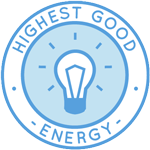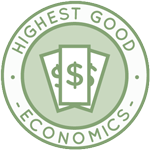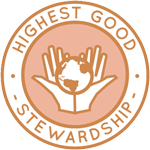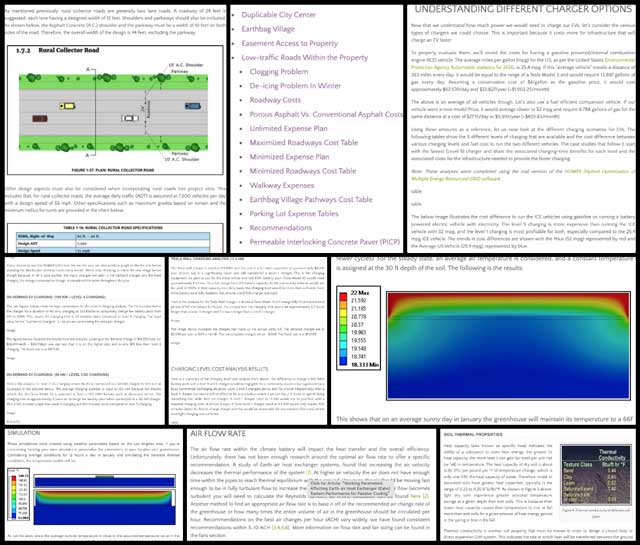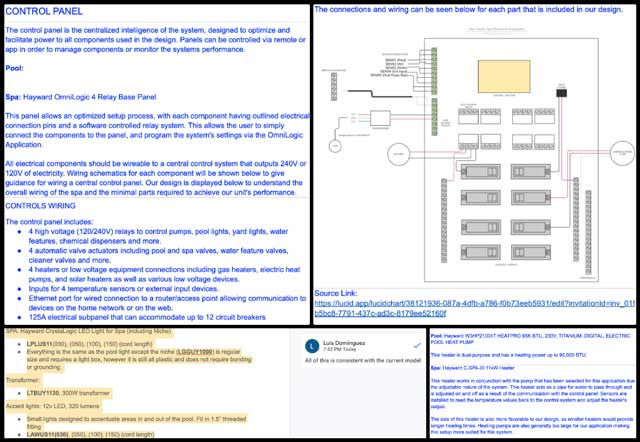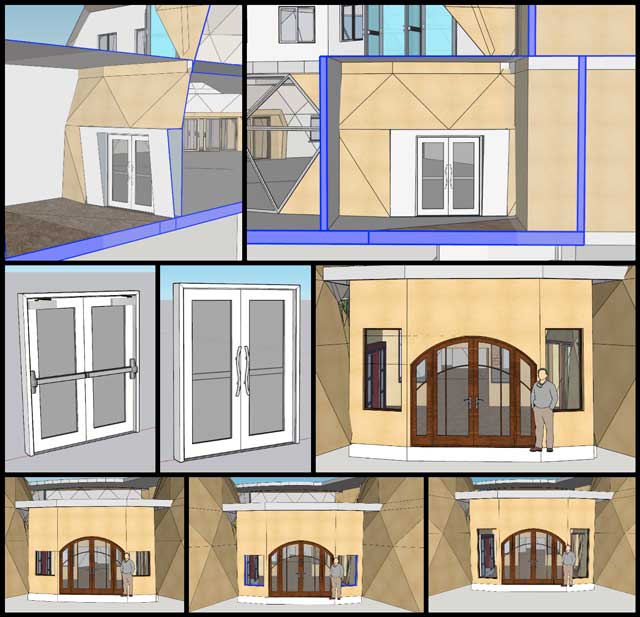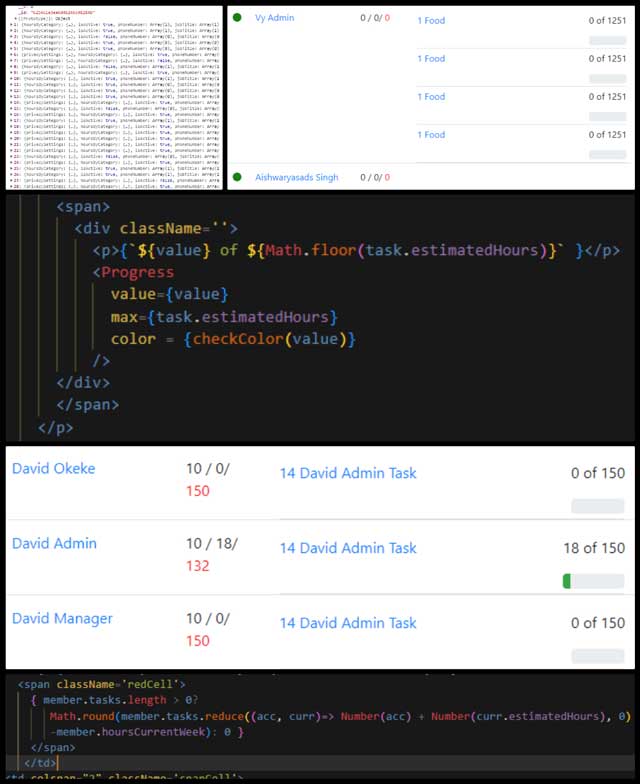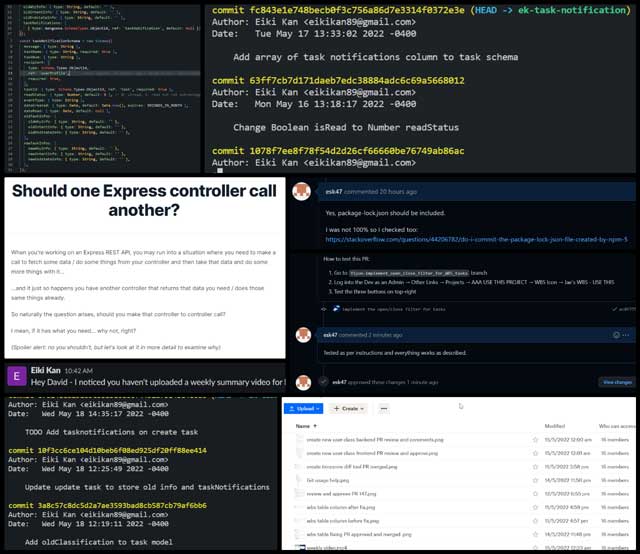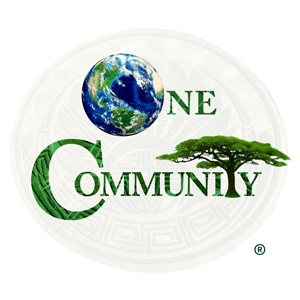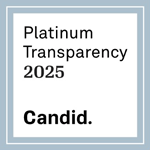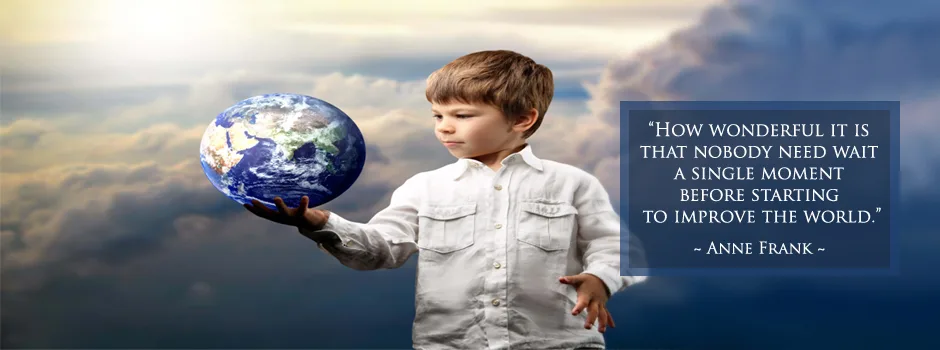
Abundance Through Community Living – One Community Weekly Progress Update #481
Posted on June 12, 2022 by Rachna Malav
Measuring abundance through community living based on free time, things to do in your free time, and access to the things we want, it is clear we can create more abundance through community living. We can create more free time by cooperating and collaborating to more easily and efficiently accomplish daily living tasks.
We can create more diverse and accessible social and recreational activities through cooperative planning and implementation. Applying cooperation to “stuff”, we can establish resource based economies and tool and equipment libraries that increase access to the things we want also. One Community is open sourcing a model for communities that provide all of this and more.
- Here’s our project overview
- Here’s our world-change methodology
- Here’s how this becomes self-replicating
- Here’s how we are open source and free-sharing all the do-it-yourself designs

OUR MAIN OPEN SOURCE HUBS
Click on each icon to be taken to the corresponding Highest Good hub page.
One Community’s physical location will forward this movement of abundance through community living as the first of many self-replicating teacher/demonstration communities, villages, and cities to be built around the world. This is the June 12th, 2022 edition (#481) of our weekly progress update detailing our team’s development and accomplishments towards abundance through community living:
Abundance Through Community Living
One Community Progress Update #481
DONATE | COLLABORATE | HELP WITH LARGE-SCALE FUNDING
CLICK HERE IF YOU’D LIKE TO RECEIVE AN EMAIL EACH WEEK WHEN WE RELEASE A NEW UPDATE
YOU CAN ALSO JOIN US THROUGH SOCIAL MEDIA
ONE COMMUNITY WEEKLY UPDATE DETAILS
HIGHEST GOOD HOUSING PROGRESS
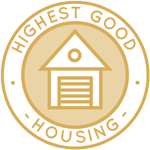 One Community is creating abundance through community living through Highest Good housing that is artistic and beautiful, more affordable, more space efficient, lasts longer, DIY buildable, and constructed with healthy and sustainable materials:
One Community is creating abundance through community living through Highest Good housing that is artistic and beautiful, more affordable, more space efficient, lasts longer, DIY buildable, and constructed with healthy and sustainable materials:
- Learn about: Our Upcoming Crowdfunding Campaign
- Learn about the different village models: 7 Sustainable Village Models
- Visit the open source portals for the first two: Earthbag Village OS Hub | Straw Bale Village OS Hub
This week the core team began re-structuring the Aircrete content so it follows the engineering page template. We also had a meeting with the City Center Hub connector team to discuss future work and give new assignments for this week, and we reviewed and responded to Daniela’s responses to roadways cost estimates, and Yuran’s work on the Walipini webpage.
Dean Scholz (Architectural Designer) continued helping with the Earthbag Village (Pod 1) 4-dome cluster designs. This was week #248 of Dean’s work as he is finishing up the actual renders. The picture below shows two test renders of the updated bathroom.
Daniela Andrea Parada (Civil Engineering Student) completed her 31st week helping with the Sustainable Roadways, Walkways, and Landscaping tutorial development. This week Daniela started off by reviewing all the newest comments. Afterwards she continued to work on the Roadways cost analysis excel sheet. Daniela was able to find various sources for decomposed granite that provided various ranges in costs, so she provided three sources in the cost analysis.
She continued to link sources that she had been working on last week and adjusted values based on Sangam’s price suggestion for a material. Daniela was able to complete all changes for tabs ranging from Total Unlimited Expense to Water Catchment Expenses. Next she worked on two tables that were not created by her, these took a bit more time to interpret and research. She also added a bit more narrative to the Roadways document. Pictures below are related to this work showcasing efforts towards the mission of abundance through community living.
Diwei Zhang (Mechanical Engineer) completed his 12th week of work, now focused on 3D modeling and analysis review for the Net-zero Bathroom component of the Earthbag Village. This week Diwei modeled a 10000 gallon water tank and placed two of them underground beneath the fountain. He also researched stormwater harvesting. Considering two different end uses, toilet flushing and hand washing, and the huge difference between the two demands, it is better to design two independent sets of harvesting systems.
The rooftop rainwater harvesting with a smaller storage capacity and treatment processing for potable water is used for the faucets’ uses. The stormwater harvesting that collects water from impervious surface runoff or rain garden with a much larger storage capacity and a simpler water treatment is used for the toilet flushing. Pictures below show some of this work showcasing efforts towards the mission of abundance through community living.
Ming Weng (MS Geography & Environmental Engineering) completed his 11th week helping with the Best Small and Large-scale Community Options for Sustainable Processing and Reuse of Non-recyclables research, report, and tutorial. This week, Ming focused on looking for cost estimation of pyrolysis, but sources are not pointing out large scales so were not adopted. The cost analysis and revenues generated from plasma gasification was further elaborated, using a case study in South Africa. The majority of time though was taken to convert things on that paper into the USA’s point of view.
Lastly, a plan of revenue estimates was proposed, since the price of electricity and fuel vary over time, which is considerable and needs to be unified for comparison with other systems. Pictures below show some of this work-in-progress showcasing efforts towards the mission of abundance through community living.
Kivia Sugiarto (Sustainability Research Manager) completed her 3rd week helping manage and complete the Best Small and Large-scale Community Options for Sustainable Processing and Reuse of Non-recyclables research, report, and tutorial. This week, Kivia focused on the costs and revenue streams of landfilling municipal solid wastes, including the collection of landfill gas. She did research on this to gather information, mostly from an EPA resource. After synthesizing the information, Kivia started writing the narrative on the common Google Doc and will continue to do so next week. See below for some pictures related to this showcasing efforts towards the mission of abundance through community living.
DUPLICABLE CITY CENTER PROGRESS
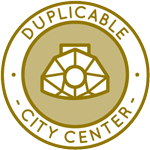 One Community is creating abundance through community living through a Duplicable and Sustainable City Center that is LEED Platinum certified/Sustainable, can feed 200 people at a time, provide laundry for over 300 people, is beautiful, spacious, and saves resources, money, and space:
One Community is creating abundance through community living through a Duplicable and Sustainable City Center that is LEED Platinum certified/Sustainable, can feed 200 people at a time, provide laundry for over 300 people, is beautiful, spacious, and saves resources, money, and space:
- Learn about this building and it’s function: Duplicable City Center Open Source Hub
This week Venus Abdollahi (Architectural Designer) completed her 37th week helping finish the Duplicable City Center designs. This week Venus completed all sections, C-C, F-F, D-D, and G_G. She added new furniture, new walls, new columns, and changed the position of some columns and walls to match the updated floor plans. See pictures below showcasing efforts towards the mission of abundance through community living.
Huiya Yang (Volunteer Architectural Designer) completed her 34th week working on the Duplicable City Center architectural review and updates related to the structural code. This week, she continued working on the window and door updates in the SketchUp Model. She finished modeling Door 14 and Door 8 according to the door size detail in the latest CAD drawing. Huiya also updated Door 14 in the Living dome and Door 8 on the fourth floor in the central area. Pictures of some of this work are below showcasing efforts towards the mission of abundance through community living.
Yuxi Lu (Architectural Designer) completed her 32nd week working on the Duplicable City Center architectural review and updates related to the structural code. This week, Yuxi continued discussion on entry door and window-column location. It seems that minor structural adjustments could be needed to best preserve the pre-fabrication nature of exterior walls. She will bring the sketch to discussion with the team next week. Floor opening enlargement discussion continued too and they found that it is unlikely to happen due to possible location of the beam, hence there will likely be a minor visual obstruction at one of the social dome windows. Pictures of some of this work are below showcasing efforts towards the mission of abundance through community living.
Raj Patel (Mechanical Engineer) completed his 23rd week helping. with the Duplicable City Center hub connectors design and testing. This week though, Raj initially read and reviewed the tutorial to calculate the energy balance using the SAM software. He also worked on adding the missing sections in the hub connectors final document to meet the necessary structure and formatting. Pictures below are related to this work showcasing efforts towards the mission of abundance through community living.
Prathik Jain (Mechanical Engineer) completed his 18th week of work volunteering. This week, Prathik also reviewed the “SAM tutorial to calculate the energy balance in One Community” which explains and provides information on how to perform simulations to generate energy model systems for renewable energy and understand the results. He also researched and explored the SAM software website to understand the different models and resources available to better understand the software to perform simulations. Pictures below show some of this work-in-progress showcasing efforts towards the mission of abundance through community living.

Kamil Gajownik (Industrial/Product Designer) completed his 6th week of work on the Duplicable City Center dormer window designs and assembly instructions. This week Kamil continued working on the dormer design project. His focus this week was on structural integrity for both floors of the dormers and ensuring the design fits well into the given space so that the dormer from the inside is easily accessible and looks good. Kamil is getting close to a finalized design which will need to be insulated and turned into assembly instructions. Pictures below are related to this work showcasing efforts towards the mission of abundance through community living.
Yujue Wang (Architectural Designer) completed her 4th week working on the interior design for the Duplicable City Center rental rooms. This week, Yujue continued the development of the Duplicable City Center Interior Design by designing curtains, costing furniture, rendering interior space, and creating presentation files. She improved the look of the cost analysis spreadsheets and continued to work on cost analysis. In terms of room design, Yujue redesigned the window curtain and started interior renderings. She also started working on the presentation files of Room 1. See below for pictures related to this work showcasing efforts towards the mission of abundance through community living.
Jessica Santos (Architect) joined the team and completed her 1st week working on the interior design for the Duplicable City Center rental rooms. She started searching for theme ideas, and she presented four different themes: Beach, Fall, Candy, and Earth. She then selected room number 2 and decided to start with the theme ”Beach”, and named it “Oasis”. The room Oasis will follow the idea of nature, like a beach day by the sea.
With a color palette of green-blue, yellow, light brown, and elements like Oars, Surf Board, straw material, etc. Jessica presented her references, and started the search for the materials. She also did a new layout design and started the 3D model to play with all the ideas and colors collected, to mix everything together and try to demonstrate a unique space. See below for some pictures of this work showcasing efforts towards the mission of abundance through community living.
Gabriela Vilela S. C. Diniz (Architect and Urban Planner) also joined the team and completed her 1st week working on the interior design for the Duplicable City Center rental rooms. At first she felt it was a little messy, she was trying to read everything and start the project at the same time because she was really excited with the assignment.
At the end of this first week though, Gabriela was able to make a first draft of the layout for the first room, themed “Fairy Garden”, and start the SketchUp model. She also came up with two themes for the second room: Treehouse and Rock Star Room, but she has not decided yet which one she is keeping. The rooms she choose to work with is #12 for Fairy Garden and #4 for the second theme. Pictures below are related to this work showcasing efforts towards the mission of abundance through community living.
HIGHEST GOOD FOOD PROGRESS
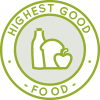 One Community is creating abundance through community living through Highest Good food that is more diverse, more nutritious, locally grown and sustainable, and part of our open source botanical garden model to support and share bio-diversity:
One Community is creating abundance through community living through Highest Good food that is more diverse, more nutritious, locally grown and sustainable, and part of our open source botanical garden model to support and share bio-diversity:
- Learn about the structures: Hoop House Hub | Aquapini & Walipini Open Source Hub
- See what we’ll be growing: Gardens & Hoop Houses | Large-scale Structures | Food Forest | TA
This week the core team continued working on updates for the Chicken Coop Building Instruction document. We did a general review of the poop trays and reviewed answers to previous comments on the development doc while providing a solution for strengthening the poop tray handle attachments for screw placement into the plywood vs. the 2×2 framing, as well as adding an additional handle to each of the 3 trays, and using paraffin wax to ease the gliding of the pullout trays on the tray bottoms and rail tops. This will be essential for longevity of the trays.
Another member of the core team updated images and text for the right, central and left manure collection trays. This includes a new design of the tray handles and location of screws on the front of the tray. We also finished updating the roosting ladder right sections. The same team member also resolved some of the open comments on the Murphy Bed instructions and generated the back storage section image shown below.
Yuran Qin (Volunteer Web Editor) completed her 29th week helping with web design. This week Yuran linked and fixed the tables in the Aquapini & Walipini page. She also finished creating the Eco-community Electric Vehicle Integration and Charging Infrastructure Guide page, including adding images, tables, the Resource section, and final checking of the format for the page before submitting it for review. The pictures below share some of this developing work showcasing efforts towards the mission of abundance through community living.
Adam Weiss (Kitchen Operations Project Manager) completed his 16th week helping with the completion of the Transition Food Self-sufficiency Plan and related menu and meal plans. Adam worked on reviewing Marilyn’s 3 day block menu submissions in detail and added comments, suggestions, and substitutions. He also reviewed some changes to the master ordering/shopping sheet, and answered emails and text messages. Most of Adam’s time was spent reviewing comments and recipe submissions to make sure that he answered as many as he could. The pictures below relate to this work showcasing efforts towards the mission of abundance through community living.
Marilyn Nzegwu (Chef and Culinary Consultant) completed her 9th week helping with the completion of the Transition Food Self-sufficiency Plan and related menu and meal plans. This week Marilyn adjusted recipes for FRESH WEEK A and FRESH WEEK B, after reviews and suggestions on particular ingredients, relational uses for leftovers, and recipes to fit dietary restrictions. She did this making sure to add protein options specifically for both vegans and omnivores and changing recipes that would be difficult as regards to scaling and portioning.
Marilyn added sourced recipes to the menu block page and updated already created recipes on the recipe page. She is taking time to correct other recipes in menu blocks putting into consideration the suggestions and reviews. The pictures below relate to this work showcasing efforts towards the mission of abundance through community living.
HIGHEST GOOD EDUCATION PROGRESS
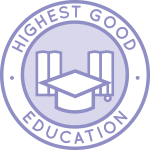 One Community is creating abundance through community living through Highest Good education that is for all ages, applicable in any environment, adaptable to individual needs, far exceeds traditional education standards, and more fun for both the teachers and the students. This component of One Community is about 95% complete with only the Open Source School Licensing and Ultimate Classroom construction and assembly details remaining to be finished.
One Community is creating abundance through community living through Highest Good education that is for all ages, applicable in any environment, adaptable to individual needs, far exceeds traditional education standards, and more fun for both the teachers and the students. This component of One Community is about 95% complete with only the Open Source School Licensing and Ultimate Classroom construction and assembly details remaining to be finished.
With over 8 years of work invested in the process, the sections below are all complete until we move onto the property and continue the development and open sourcing process with teachers and students – a development process that is built directly into the structure of the education program and everything else we’re creating too:
- Program Overview: Education Open Source Hub
- How the components work together: How to use the Education for Life Program
- Lesson Plans for Life – Lesson Plans How-to
- Foundations of Outstanding Leaders, Teachers, and Communicators
- Curriculum for Life
- Teaching Strategies for Life
- Learning Tools and Toys for Life
- Evaluation and Evolution
This week, Adolph Karubanga (Certified Project Manager & Civil/Structural Engineer) completed his 12th week helping with the Ultimate Classroom structural engineering. During this week, Adolph completed the structural design report of the roof structure including a description of the steps undertaken during design and the assumptions executed to arrive at some of the conclusions.
The report presents the design of a critical truss structure of total span 40ft. Review and adjustment of AUTOCAD drawings will be finalized in this coming week. Pictures below are related to this work showcasing efforts towards the mission of abundance through community living.
HIGHEST GOOD SOCIETY PROGRESS
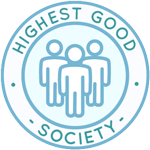 One Community is creating abundance through community living through a Highest Good society approach to living that is founded on fulfilled living, the study of meeting human needs, Community, and making a difference in the world:
One Community is creating abundance through community living through a Highest Good society approach to living that is founded on fulfilled living, the study of meeting human needs, Community, and making a difference in the world:
- Read the Highest Good society overview: Highest Good Society
- Learn about the model for fulfilled living and sharing: A Day in the Life
- Learn about the 4 economic models: RBE | For-profit | Non-profit | Entrepreneurship
- Learn about our open source community collaboration and management software: The Highest Good Network
This week the core team completed 21 hours managing One Community volunteer-work review not included above, emails, social media accounts, web development, new bug identification and bug fix integration for the Highest Good Network software, and interviewing and getting set up new volunteer team members. Pictures below show some of this, showcasing efforts towards the mission of abundance through community living.
Miguel Fernandes (Full-stack Developer) completed his 14th week helping with the Highest Good Network software. This week, Miguel started by reviewing, testing and approving PR #411. After that, he improved the user permissions management dashboard, getting the frontend part of it done. Then he reviewed, tested and approved PR’s number #422, #428, #432, and #433. Miguel ended his week writing documentation about the user permissions management dashboard and reviewing PR #435. Pictures of some of this work are below showcasing efforts towards the mission of abundance through community living.
Phu Nguyen (Software Developer) completed his 11th week helping with the Highest Good Network software. This week, Phu worked on the bugs for deleting unnecessary “!” for user roles and rerouting to calculate total tangible hours for each project category. Phu also reviewed Vera’s and Jorge’s pull requests.
Yiyun Tan (Software Engineer) completed her 10th week helping with the Highest Good Network software. This week Yiyun put most of her time into “implementing a single task WBS page from the management-dashboard”. She dug into this problem then figured out reusing current WBS page code would be the easiest way. So she added a condition to filter the WBS task by id to implement that. Coded in PR 432, already got approved and merged. Yiyun then started working on “giving appropriate views for different users”. Pictures of some of this work are below showcasing efforts towards the mission of abundance through community living.
Ron Magpantay (Software Engineer) completed his 9th week helping with the Highest Good Network software. This week Ron continued to work on resolving bugs. There were some issues that were caused by the pull requests that he created so they were reverted until a new fix can be provided. Earlier this week, assistance was provided with debugging and identifying two core issues that led to irregular displays with fonts and pop ups throughout the entire HGN application; changes to fix this were made in collaboration with other team members.
For developmental changes, and also in collaboration with other team members, Ron worked to modify variables in two components that resolve functional issues regarding time entries and permission-related issues. See pictures below for some of this work showcasing efforts towards the mission of abundance through community living.
Steven (Shaoyu) Wang (Software Engineer) completed his 6th week helping with the Highest Good Network software showcasing efforts towards the mission of abundance through community living. This week Steven helped resolve three bugs and raised PRs according to each bug. First, he applied the “active inactive button” logic in the user management page to the user profile page, this solved the problem that accounts keep coming back if they are deactivated from their profile.
Second, he made the save/cancel buttons only show on the “Basic Information” tab in the user profile when login in as a non-Admin user. Lastly, he rearranged the layout of the save/cancel buttons to make them look more consistent and intuitive. See pictures below for some of this work showcasing efforts towards the mission of abundance through community living.
Eiki Kan (Software Engineer) completed his 5th week helping with the Highest Good Network software showcasing efforts towards the mission of abundance through community living. In terms of management work, this week Eiki reviewed weekly summaries, did work on rescheduling the biweekly meetings with the team, onboarded and answered questions for new team members, and communicated with Jae and the rest of the team for managerial tasks. In terms of software development, Eiki answered coding problems and continued to work on the task notification feature.
His main work this week involved writing queries on the backend to collect weekly completed hours and tasks for users in a user’s team and condensing it all into a single aggregation function. By doing that, Eiki further improved the responsiveness of the app because the backend now only makes one request to the database rather than multiple. See pictures below for some of this work showcasing efforts towards the mission of abundance through community living.
Jorge Ivan Rodriguez (Software Engineer) completed his 4th week helping with the Highest Good Network software showcasing efforts towards the mission of abundance through community living. This week he worked on the timer component by adding some redux libraries as a “REHYDRATE”, the component is working well but the synchronization takes a few seconds to work due to the fetching that the component needs to validate. He also started working to stop the timer after logging out, it is working but doesn’t pass the tests, so still working to fix the issue. See pictures below for some of this work showcasing efforts towards the mission of abundance through community living.
Yongtae “Yogi” Park (Graphic Designer, UX Designer) completed his 3rd week helping create the social media images for these weekly progress update blogs showcasing efforts towards the mission of abundance through community living. This week, Yongtae made adjustments based on feedback to some of the previous images and created new images from 537 to 546. He focused on manipulating the color schemes of the original image sources to make the texts be more visible. He also experimented with overlaying two images together to give another meaning that aligns with the title. Below you can see the images he created showcasing efforts towards the mission of abundance through community living.
Vera Timokhina (Software Engineer) completed her 2nd week helping with the Highest Good Network software. This week Vera fixed several bugs: she helped Ron to fix broken popups and made a PR that fixed the bug that Admin/Owner was no longer able to edit dates of user time logs and couldn’t change intangible time to tangible. Vera then took over the front end of the reports functionality and now she is trying to fix the display of weekly tangible time on a person’s report page.
Also, she continues to work with Eiki on task notifications: together, they are setting up data transfer between backend and frontend. See pictures below for some of this work showcasing efforts towards the mission of abundance through community living.
Jason Kim (Software Engineer) also joined the team and completed his 1st week helping with the Highest Good Network software showcasing efforts towards the mission of abundance through community living. This week Jason mostly did research and ran through the relevant codebase related to the feature that has been assigned to him. Jason spent time understanding the workflow and git. In addition, he started looking into implementing the progress bar in the management dashboard. Jason looked into the idea of using the progress bar feature of reactstrap, which was already being utilized in the leaderboard section. However, upon research, it seemed that reactstrap had some color limitations to it.
For example, it looked like indigo and violet colors were not available for use. In response, Jason started building out the progress bar from scratch, setting up a new ‘ProgressBar’ component in React, in response. He was able to create the basic outer skeleton of the progress bar, shown in the current state screenshot in Dropbox in addition to placeholders for the task hours and estimated hours. The component is still a work in progress. See pictures below for some of this work showcasing efforts towards the mission of abundance through community living.
AND WE PRODUCED THIS WEEKLY UPDATES BLOG – CLICK HERE TO SUBSCRIBE
FOLLOW ONE COMMUNITY’S PROGRESS (click icons for our pages)
INVESTOR PAGES
GET INVOLVED
Eco-renovating Our Living Models – One Community Weekly Progress Update #480
Posted on June 5, 2022 by Rachna Malav
One Community is creating open source and free-shared plans for eco-renovating our living models. They include sustainable approaches to food, energy, housing, education, for-profit and non-profit economic design, social architecture, fulfilled living, global stewardship practices, and more. Applying these, we can improve our lives, reduce expenses, and regenerate our planet. This is the June 5th, 2022 edition (#480) of our weekly progress update detailing our team’s development and accomplishments towards eco-renovating our living models.
- Here’s our project overview
- Here’s our world-change methodology
- Here’s how this becomes self-replicating
- Here’s how we are open source and free-sharing all the do-it-yourself designs

OUR MAIN OPEN SOURCE HUBS
Click on each icon to be taken to the corresponding Highest Good hub page.
One Community’s physical location will forward this movement of eco-renovating our living models as the first of many self-replicating teacher/demonstration communities, villages, and cities to be built around the world. This is the June 5th, 2022 edition (#480) of our weekly progress update detailing our team’s development and accomplishments towards eco-renovating our living models:
Eco-renovating Our Living Models
One Community Progress Update #480
DONATE | COLLABORATE | HELP WITH LARGE-SCALE FUNDING
CLICK HERE IF YOU’D LIKE TO RECEIVE AN EMAIL EACH WEEK WHEN WE RELEASE A NEW UPDATE
YOU CAN ALSO JOIN US THROUGH SOCIAL MEDIA
ONE COMMUNITY WEEKLY UPDATE DETAILS
HIGHEST GOOD HOUSING PROGRESS
 One Community is eco-renovating our living models through Highest Good housing that is artistic and beautiful, more affordable, more space efficient, lasts longer, DIY buildable, and constructed with healthy and sustainable materials:
One Community is eco-renovating our living models through Highest Good housing that is artistic and beautiful, more affordable, more space efficient, lasts longer, DIY buildable, and constructed with healthy and sustainable materials:
- Learn about: Our Upcoming Crowdfunding Campaign
- Learn about the different village models: 7 Sustainable Village Models
- Visit the open source portals for the first two: Earthbag Village OS Hub | Straw Bale Village OS Hub
This week Stacey Maillet (Graphic Designer) completed her 75th week working on the final edits and revisions to the Murphy bed instructions. This week, Stacey continued to make updates based on the feedback of the three core team members reviewing her work. Updates covered everything from simple changes like alignment and formatting, to more complex changes in hardware and parts. Screenshots below are related to this latest progress towards eco-renovating our living models.
Daniela Andrea Parada (Civil Engineering Student) completed her 30th week helping with the Sustainable Roadways, Walkways, and Landscaping tutorial development. This week Daniela started by having a virtual meeting with Sangam. During this meeting Daniela and Sangam discussed concerns or questions regarding the roadways cost analysis. All questions were cleared and Sangam made a few suggestions for what Daniela should work on this week. Daniela then primarily focused on researching government based documents that support the cost of each material used in the excel sheet. Once found, she linked each document to the table materials.
This took longer than expected because some material costs were needed in a certain unit while others were difficult to find with credible sources. Daniela completed the majority of the cost analysis materials but still plans on going back to research some of the materials that were more difficult to find. Pictures below are related to this work towards eco-renovating our living models.
Diwei Zhang (Mechanical Engineer) completed his 11th week of work, now focused on 3D modeling and analysis review for the Net-zero Bathroom component of the Earthbag Village. This week Diwei Zhang checked Jose’s calculation of the catchment area of the rainwater harvesting system. He included water-saving toilets and faucets in the estimation of the water demand. Based on the updated water demand, the current layout is short on catchment area and space for the larger storage capacity that is needed. The surface runoff rainwater harvesting could be a solution for more rainwater catchment.
Underground cisterns could be a solution for larger storage capacity which is not limited by aboveground structures. The topic of stormwater management needs to be considered to design drainage for the surface runoff water harvesting. Pictures below show some of this work towards eco-renovating our living models.
Ming Weng (MS Geography & Environmental Engineering) completed his 10th week helping with the Best Small and Large-scale Community Options for Sustainable Processing and Reuse of Non-recyclables research, report, and tutorial. This week, Ming looked for smaller scales of biomass gasification systems. Case studies were reviewed but they all mostly emphasized how the systems work. What is needed is information on cost analysis and its economical attributes, so not many things were clarified. Ming also took some time to fix minor errors in the current “Addressing Non-recyclables” document. Pictures below show some of this work-in-progress towards eco-renovating our living models.
Kivia Sugiarto (Sustainability Research Manager) completed her 2nd week helping manage and complete the Best Small and Large-scale Community Options for Sustainable Processing and Reuse of Non-recyclables research, report, and tutorial. Early in the week, Kivia wrote a section on the master document on the cost of incineration based on Ming’s previous work and her own additional research. Upon receiving some feedback, she made some edits and also added a subsection on the revenues expected from incineration plants. Kivia then proceeded to do research on the cost of gasification. This took quite a bit longer as there are fewer resources available online. See below for some pictures related to this towards eco-renovating our living models.
DUPLICABLE CITY CENTER PROGRESS
 One Community is eco-renovating our living models through a Duplicable and Sustainable City Center that is LEED Platinum certified/Sustainable, can feed 200 people at a time, provide laundry for over 300 people, is beautiful, spacious, and saves resources, money, and space:
One Community is eco-renovating our living models through a Duplicable and Sustainable City Center that is LEED Platinum certified/Sustainable, can feed 200 people at a time, provide laundry for over 300 people, is beautiful, spacious, and saves resources, money, and space:
- Learn about this building and it’s function: Duplicable City Center Open Source Hub
This week Yuxi Lu (Architectural Designer) completed her 31st week working on the Duplicable City Center architectural review and updates related to the structural code. This week, Yuxi discussed adjacent entry door wall and window solutions while trying to keep types of windows to a minimum. This still identified a new type of window to satisfy the narrow width by the entryway to the pool area. She also made new second floor wall proposals that will open up views to the interior and improve the view from the mezzanine level. Yuxi made updates in SketchUp to see the effects on the dome and compare the visuals. Pictures of some of this work are below towards eco-renovating our living models.
Raj Patel (Mechanical Engineer) completed his 22nd week helping with the Duplicable City Center hub connectors design and testing. This week Raj read and reviewed the Earthbag Village Engineering page to figure out the structure so he could match the formatting and layout of the geodesic dome hub connector final paper to this structure. He also worked on reformatting the document to match One Community standards. Pictures below are related to this work towards eco-renovating our living models.
Prathik Jain (Mechanical Engineer) completed his 17th week of work on the Duplicable City Center hub connectors design and analysis. This week Prathik reviewed and verified the results and the conclusion in the final document that was prepared detailing the process used in the design of the center hub connector. He also suggested necessary corrections or suggestions in the document. Additionally, Prathik conducted research to find more vendors that could fabricate the U and V brackets required for the construction of the dome. Pictures below show some of this work-in-progress towards eco-renovating our living models.
Yujue Wang (Architectural Designer) completed her 3rd week working on the interior design for the Duplicable City Center rental rooms. This week, Yujue continued the development of the Duplicable City Center Interior Design by researching artificial plants, curtain design, carpet selection, furniture adjustment, and furniture cost analysis. She researched the plants in the room and chose artificial plants to avoid bugs and having to water them. Yujue also completed most of the room’s cost research and furniture selection. See below for pictures related to this work towards eco-renovating our living models.
HIGHEST GOOD FOOD PROGRESS
 One Community is eco-renovating our living models through Highest Good food that is more diverse, more nutritious, locally grown and sustainable, and part of our open source botanical garden model to support and share bio-diversity:
One Community is eco-renovating our living models through Highest Good food that is more diverse, more nutritious, locally grown and sustainable, and part of our open source botanical garden model to support and share bio-diversity:
- Learn about the structures: Hoop House Hub | Aquapini & Walipini Open Source Hub
- See what we’ll be growing: Gardens & Hoop Houses | Large-scale Structures | Food Forest | TA
This week the core team worked on updates for the Aquapini & Walipini Open Source hub. We added images, as well as captions, and reviewed responses and added additional comments as necessary. Pictures below related to this work towards eco-renovating our living models.
The core team also continued working on updates for the Chicken Coop Building Instruction document. The focus this week was rewriting paragraphs for further clarity and describing additional specific instructions for assembly of the 3 trays at the bottom of the coop for gluing and screw spacing/frequency. We then made additional edits to the roosting ladder, which will undergo changes related to the horizontal and vertical distance that separate the roosting bars.
Another member of the core team updated the design of the Chicken Coop collection trays by adding additional parts for better connection of the front of the tray. We also updated the designs of the roosting ladder. We removed some of the bars and placed the rest of the bars according to the space requirements for roosting chickens. All images related to these changes were then updated in the assembly document.
Yuran Qin (Volunteer Web Editor) completed her 28th week helping with web design. This week, Yuran updated and fixed the Aquapini & Walipini staging page and the Open Source Climate Battery Design live pages based on feedback. She updated the Image Title Attributes and the Alternative texts for the images and made tables and replaced them for the Aquapinis and Walipinis page. Yuran also continued creating the Eco-community Electric Vehicle Integration and Charging Infrastructure Guide page. The pictures below share some of this developing work towards eco-renovating our living models.
Adam Weiss (Kitchen Operations Project Manager) completed his 15th week helping with the completion of the Transition Food Self-sufficiency Plan and related menu and meal plans. Adam reviewed Marilyn’s new 3-day block recipes and offered feedback where needed. Then Adam worked mostly on the conversion calculator part of the Master Shopping List, adding in calculations for converting different measurements into other measurements. He also researched by watching YouTube instructions and practiced if it was possible to add a drop down menu with different measurement types that would automatically do the calculations when a measurement type was selected. The pictures below relate to this work towards eco-renovating our living models.
Marilyn Nzegwu (Chef and Culinary Consultant) completed her 8th week helping with the completion of the Transition Food Self-sufficiency Plan and related menu and meal plans. This week Marilyn completed two sets of menu blocks; “FRESH WEEK C” and “SECOND WEEK C”. She spent more time sourcing for recipes for SECOND WEEK C to avoid using fresh ingredients in recipes and as a result of that added new found recipes to the recipe development page. This includes replacing a lot of breakfast recipes as it was suggested to her that some recipes would not be suitable for the scaled amount. The pictures below relate to this work towards eco-renovating our living models.
HIGHEST GOOD EDUCATION PROGRESS
 One Community is eco-renovating our living models through Highest Good education that is for all ages, applicable in any environment, adaptable to individual needs, far exceeds traditional education standards, and more fun for both the teachers and the students. This component of One Community is about 95% complete with only the Open Source School Licensing and Ultimate Classroom construction and assembly details remaining to be finished.
One Community is eco-renovating our living models through Highest Good education that is for all ages, applicable in any environment, adaptable to individual needs, far exceeds traditional education standards, and more fun for both the teachers and the students. This component of One Community is about 95% complete with only the Open Source School Licensing and Ultimate Classroom construction and assembly details remaining to be finished.
With over 8 years of work invested in the process, the sections below are all complete until we move onto the property and continue the development and open sourcing process with teachers and students – a development process that is built directly into the structure of the education program and everything else we’re creating too:
- Program Overview: Education Open Source Hub
- How the components work together: How to use the Education for Life Program
- Lesson Plans for Life – Lesson Plans How-to
- Foundations of Outstanding Leaders, Teachers, and Communicators
- Curriculum for Life
- Teaching Strategies for Life
- Learning Tools and Toys for Life
- Evaluation and Evolution
This week, Adolph Karubanga (Certified Project Manager & Civil/Structural Engineer) completed his 11th week helping with the Ultimate Classroom structural engineering. This week, Adolph worked on the detailed design report of the roof structure. The report describes the steps undertaken during design and the assumptions that were executed to arrive at some of the decisions.
The roof structure was designed to withstand the prescribed loading conditions in the codes of practice, these were also tailored with the specific regional values provided in the map (wind, snow); tekla structural designer, tekla tedds and tekla structures were used in analysis and design calculation results presented in the report. The designed structure was also verified against LEED® provisions, and materials were selected that satisfied the provisions. Adolph then commenced preparing detailed AutoCAD drawings of the truss structure. Pictures below are related to this work towards eco-renovating our living models.
Lam (Dave) T. Nguyen (Mechanical Engineer) completed his 8th week of work. This week, Dave finished double-checking energy demands for the Ultimate Classroom. He validated data by comparing it to each area of the Ultimate Classroom and with external reliable sources such as the U.S Energy Information Administration. Pictures below are related to this work towards eco-renovating our living models.
HIGHEST GOOD SOCIETY PROGRESS
 One Community is eco-renovating our living models through a Highest Good society approach to living that is founded on fulfilled living, the study of meeting human needs, Community, and making a difference in the world:
One Community is eco-renovating our living models through a Highest Good society approach to living that is founded on fulfilled living, the study of meeting human needs, Community, and making a difference in the world:
- Read the Highest Good society overview: Highest Good Society
- Learn about the model for fulfilled living and sharing: A Day in the Life
- Learn about the 4 economic models: RBE | For-profit | Non-profit | Entrepreneurship
- Learn about our open source community collaboration and management software: The Highest Good Network
This week the core team completed 20 hours managing One Community volunteer-work review not included above, emails, social media accounts, web development, new bug identification and bug fix integration for the Highest Good Network software, and interviewing and getting set up new volunteer team members. Pictures below show some of this towards eco-renovating our living models.
Chris Weilacker (Senior Software Engineer) completed his 37th week of formal contribution to the Highest Good Network software. Chris helped with a diversity of ongoing support for the team answering questions and helping with various emergency bugs. Pictures below are related to this work towards eco-renovating our living models.
Miguel Fernandes (Full-stack Developer) completed his 13th week helping with the Highest Good Network software. This week Miguel started by reviewing and testing some Pull Requests. After reviewing PR’s #411 and #158, he left comments with things to improve. He raised a PR (#156) that solved a small logical error editing other user’s time logs. After that, he approved PR #158. To finish his week, Miguel started developing the dashboard to manage user role permissions. Pictures of some of this work are below towards eco-renovating our living models.
Yiyun Tan (Software Engineer) completed her 9th week helping with the Highest Good Network software. This week Yiyun got feedback for expanding the current three filters (open/close/all) to six (all, assigned, unassigned, active, inactive, complete) and then she fixed them. She also added “complete” as an option for status when editing a task.
After that, Yiyun put most of her time discussing with Jae about the management-dashboard design, finally they agreed on 24/48/72h buttons for showing people’s time log during that period. And when the manager/mentor wants to create/delete/edit a task, they will wait for the approval by the admin/owner. Also, a notification will show on the admin/owner’s page. After the admin/owner approves/rejects/edits that action, the tasks page will be updated. Yiyun also took some time to help the team review PRs and GitHub things. Pictures of some of this work are below towards eco-renovating our living models.
Ron Magpantay (Software Engineer) completed his 8th week helping with the Highest Good Network software. This week Ron resolved two bugs that were affecting the HGN application. There was an issue with Admin accounts being ‘defaulted’ to add tangible time entries even when the intangible time entry button was clicked. The second issue was related to a display of user badges ‘wrapping’ awkwardly and in certain cases, removing buttons altogether. Both of these issues were resolved with pull requests to the main application and are currently under review.
After these bugs had been resolved, Ron revisited another bug that he had been working on relating to a popup that triggers when duplicate user firstnames + lastnames already exist in the system. The modal was built out from scratch and new logic has been determined for when to trigger the modal, this was achieved with the help of another volunteer. See pictures below for some of this work towards eco-renovating our living models.
David Okeke (Software Engineer) also completed his 7th and final week helping with the Highest Good Network software. This week David started out with adding tasks to the project dropdown list on the time entry form but could not complete it as there seems to be code on the backend which checks for projectId of time entries. Next week he will delve into the backend code or find some other way to circumvent this problem. See pictures below for some of this work towards eco-renovating our living models.
Steven (Shaoyu) Wang (Software Engineer) completed his 5th week helping with the Highest Good Network software. This week, Steven improved the backend cache behavior while doing any user profile modification and raised a PR about this update. He also helped review a PR solving the badge wrapping problem. Then, Steven started working on a new bug that previous paused users automatically come back after deactivating. He tried to copy the logic from the user management page to solve the bug. See pictures below for some of this work towards eco-renovating our living models.
Eiki Kan (Software Engineer) completed his 4th week helping with the Highest Good Network software. This week, in terms of management, Eiki reviewed the work of his team by referencing their weekly summary videos. He led a scheduled meeting with Yiyun and David so the team could learn what everyone was working on and struggling with. He integrated a new member, Vera, to the team and worked with her through a couple of programming sessions to help achieve her goals and for mutual knowledge sharing. In terms of software development, he continued to work on the management dashboard and red bell notification feature.
The original code made multiple requests to the backend when it could be simplified to one request, significantly speeding up the loading of the component. Eiki worked on refactoring the existing code by modularizing it – making it easier to add more features to and making it easier for new developers to come in and work with the component. The work involved both the frontend and the backend. See pictures below for some of this work towards eco-renovating our living models.
Jorge Ivan Rodriguez (Software Engineer) completed his 3rd week helping with the Highest Good Network software. This week Jorge tested the timer to fix its functionality. The timer component wasn’t working when the clear button cleared the timer because refreshing brought back the old time. He got it to clear but then couldn’t get the Start button to work. The pause button didn’t work when two timers were open too. To fix the above issues we need to implement stateReconciler: hardSet, that allows it to work with nested props and REHYDRATE as the UI component to render information in different tabs. See pictures below for some of this work towards eco-renovating our living models.
Yongtae “Yogi” Park (Graphic Designer, UX Designer) completed his 2nd week helping create the social media images for these weekly progress update blogs. This week, Yongtae created 10 more images, starting from #527 to #536. He focused on manipulating images on top of gradation using different light features that Photoshop provides, to create an interesting overlay (like how sunset shade is created on #535. On top of that, Yongtae applied some of the feedback provided for the previous set of images and made adjustments. Below you can see the images he created contributing efforts towards eco-renovating our living models.
Jin Hua (Web Marketer and Graphic Designer) helped us with checking plugin compatibility and updates to our adwords campaigns. See pics below related to this towards the mission of eco-renovating our living models.
Vera Timokhina (Software Engineer) also joined the team and completed her 1st week helping with the Highest Good Network software. This week, Vera started working with Eiki on the TeamMemberTasks component to contribute efforts towards eco-renovating our living models. They cleaned up the component, introduced react hooks to this component, changed the code so it won’t be making so many calls to the backend and will now receive all needed data in a single call.
Vera also helped Phu with the people reports page: there were problems with sizing of the background, the table and the navbar. These elements’ sizes weren’t matching screen size. Vera fixed that and now the page displays properly. See pictures below for some of this work towards eco-renovating our living models.
AND WE PRODUCED THIS WEEKLY UPDATES BLOG – CLICK HERE TO SUBSCRIBE
FOLLOW ONE COMMUNITY’S PROGRESS (click icons for our pages)
INVESTOR PAGES
GET INVOLVED
One Community Welcomes Lam (Dave) T. Nguyen to the Mechanical Engineering Team!
Posted on June 5, 2022 by One Community
One Community welcomes Lam (Dave) T. Nguyen to the Mechanical Engineering Team as our newest Volunteer/Consultant!

Dave is a self-motivated recent graduate of the ABET-accredited Bachelor degree of Science in Mechanical Engineering with a concentration in Aerospace Engineering. He is especially interested in a world of innovation that is evolving with intelligent, efficient, and secure technology. With this passion, he eagerly utilizes his education and skills to participate in work experiences that forward the realization of such a world. As a member of the One Community team, Dave is applying his engineering knowledge and dedication to help complete the energy analysis needs for our large-scale solar farm sizing.
WELCOME TO THE TEAM DAVE!
FOLLOW ONE COMMUNITY’S PROGRESS (click icons for our pages)
INVESTOR PAGES
GET INVOLVED
One Community Welcomes Ron Magpantay to the Software Development Team!
Posted on June 5, 2022 by One Community
One Community welcomes Ron Magpantay to the Software Development Team as our newest Volunteer/Consultant!

Ron is an aspiring Fullstack Software Engineer that completed a Software Engineering Immersive at General Assembly. He is pivoting from a background in Sales and Administration because of his interests in the tech industry, his desire to solve problems, and he enjoys creating products from start to finish. Ron is a team player and a lifelong learner. As a member of the One Community team, Ron is helping with reviewing and approving other people’s code and fixing bugs in the Highest Good Network .
WELCOME TO THE TEAM RON!
FOLLOW ONE COMMUNITY’S PROGRESS (click icons for our pages)
INVESTOR PAGES
GET INVOLVED
Blueprint for a Sustainable World – One Community Weekly Progress Update #479
Posted on May 29, 2022 by One Community
It’s time for a replicable blueprint for a sustainable world. If we make it easy enough, affordable enough, and demonstrate it as attractive enough, it will spread on its own. One Community is developing an open source and free-shared version of this as a self-replicating pathway to global sustainability.
- Here’s our project overview
- Here’s our world-change methodology
- Here’s how this becomes self-replicating
- Here’s how we are open source and free-sharing all the do-it-yourself designs
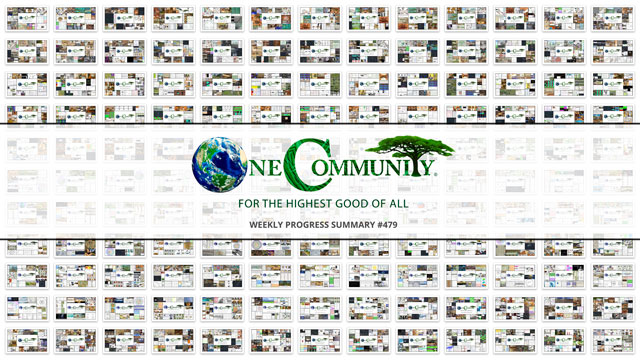
OUR MAIN OPEN SOURCE HUBS
Click on each icon to be taken to the corresponding Highest Good hub page.
One Community’s physical location will forward this movement as the first of many self-replicating teacher/demonstration communities, villages, and cities to be built around the world. This is the May 29th, 2022 edition (#479) of our weekly progress update detailing our team’s development and accomplishments:
Blueprint for a Sustainable World
One Community Progress Update #479
DONATE | COLLABORATE | HELP WITH LARGE-SCALE FUNDING
CLICK HERE IF YOU’D LIKE TO RECEIVE AN EMAIL EACH WEEK WHEN WE RELEASE A NEW UPDATE
YOU CAN ALSO JOIN US THROUGH SOCIAL MEDIA
ONE COMMUNITY WEEKLY UPDATE DETAILS
HIGHEST GOOD HOUSING PROGRESS
 One Community is creating a blueprint for a sustainable world through Highest Good housing that is artistic and beautiful, more affordable, more space efficient, lasts longer, DIY buildable, and constructed with healthy and sustainable materials:
One Community is creating a blueprint for a sustainable world through Highest Good housing that is artistic and beautiful, more affordable, more space efficient, lasts longer, DIY buildable, and constructed with healthy and sustainable materials:
- Learn about: Our Upcoming Crowdfunding Campaign
- Learn about the different village models: 7 Sustainable Village Models
- Visit the open source portals for the first two: Earthbag Village OS Hub | Straw Bale Village OS Hub
This week the core team integrated Dr. Bai’s input after his review of the Final Aircrete Compression Testing Report, as well as re-formatted, re-wrote, and reorganized much of the report to match the style of current content. They also met with the Center Hub Connector Team and re-directed some of their efforts to researching options for manufacturing the DIY bracket they’ve been designing, helping in create a blueprint for a sustainable world. Pictures of some of this work are below.
The core team also worked on Murphy bed edits for pages 30-34.5, regarding Wall Sections. We addressed comments but had difficulty in relating the comments to the proper page on the doc. After a call to clarify the circumstances we made further progress. We also finished checking in 3D the assembly instructions for the rest of the Murphy Bed. We checked measurements for all parts of the night stands, assembled the night stands in SketchUp 3D following the assembly instructions and placed them next to the Murphy bed shelving unit on the side of the bed, helping in create a blueprint for a sustainable world. See pictures below related to this progress.
And the core team finished another big round of feedback and website updates for the Sustainable Roadways, Walkways, and Landscaping tutorial, helping in create a blueprint for a sustainable world. See pictures below related to this progress.
Jose Luis Flores (Mechanical Engineer) completed his 96th week helping finish the Net-zero Bathroom component of the Earthbag Village. This week Jose Luis continued working on the calculations involving the fatigue life of the bolts for the rain barrel support structure of the Net-Zero Bathroom. After gathering constants from graphs in the literature such as the static stress concentration factor and the notch sensitivity factor, and calculating the fatigue stress concentration factor, he came to the conclusion that failure would occur when using 3 support beams at a length of 34in.
The bending stress developed was at 83.4 ksi, much higher than the ultimate tensile strength of 60 ksi. Though strain hardening can be taken into account to get a more accurate figure, the variation of this would be too unstable for use. He then changed the design to include 6 beams and shortened the distance to 27.25in. This led to a bending stress of 33.4ksi, which when intersected on the S-N curve, was found to have a total cyclical life range of 334000 to 335000 cycles.
Next Jose Luis will implement the calculations to make a spreadsheet that will correlate rainfall, water catchment, and the fatigue life of the bolts to have an idea of service life in different areas. This will be accomplished by using a cumulative damage model, helping in create a blueprint for a sustainable world. The pictures below show some of this work.
Stacey Maillet (Graphic Designer) completed her 74th week working on the final edits and revisions to the Murphy bed instructions. This week, Stacey continued to make updates based on the feedback of the three core team members reviewing her work. Updates covered everything from simple changes like alignment and formatting to much more complex changes in hardware, helping in create a blueprint for a sustainable world. Screenshots below are related to this latest progress.
Daniela Andrea Parada (Civil Engineering Student) completed her 29th week helping with the Sustainable Roadways, Walkways, and Landscaping tutorial development. This week Daniela began by reading through and responding to all comments as the Core Team submitted them while reviewing the cost analysis section. The rest of her time was spent reading through the resources she had gathered for the Flexible Pavement Design section. She noted important details that would help further explain the topic.
In the images, all notes Daniela took that are in green font were notes previously made, and the notes in black were research completed this week. Daniela then started to write the Flexible Pavement Design section, helping in create a blueprint for a sustainable world. Pictures below are related to this work.
Yuran Qin (Volunteer Web Editor) completed her 27th week helping with web design. This week Yuran continued working on creating the co-community Electric Vehicle Integration and Charging Infrastructure Guide page using the Google Doc content. She also added some new content and updated the tables for the Sustainable Roadways page. Then she updated the Open Source Climate Battery Design page with feedback from Jae, helping in create a blueprint for a sustainable world. The pictures below share some of this developing work.
Diwei Zhang (Mechanical Engineer) completed his 10th week of work, now focused on 3D modeling and analysis review for the Net-zero Bathroom component of the Earthbag Village. This week Diwei designed the collection and storage of the rainwater harvesting system. Four 1000-gallon tanks under the shower room are connected in parallel. The Inlet pipe reaches to the bottom of the tank with a return bend end to reduce the disturbing of water momentum on the debris at the bottom.
The conveyance pipe is designed at 1.8 degrees to enhance the flow. The downspout filter is added to filtrate debris or leaves. Gutters were also added in the front of the Tropical Atrium at 2.8 degrees slope to enhance flow, helping in create a blueprint for a sustainable world. Pictures below show some of this work.
Ming Weng (MS Geography & Environmental Engineering) completed his 9th week helping with the Best Small and Large-scale Community Options for Sustainable Processing and Reuse of Non-recyclables research, report, and tutorial. This week Ming discussed his thoughts and plans with Kivia regarding the cost estimation study. Some comments were made and got resolved.
The majority of his time was spent on cost estimations of biomass and plasma gasification. Since there are more materials to read in the biomass section, plasma gasification was the main focus of this week. The Plasco Conversion process was mentioned as the smallest scale plasma gasification found so far. Cost estimation was based on that case study, helping in create a blueprint for a sustainable world. Pictures below show some of this work-in-progress.
Yushi (Zoey) Cai (Electrical Engineer Researcher) completed her 7th week helping with research focused on Sustainable Lightbulbs and Light Bulb Companies. This week Yushi researched LED light bulbs. She created a table summarizing/comparing the lumen efficiency of incandescent bulbs, CFL bulbs, and LED bulbs. Yushi also researched the health risks of LED and why LEDs flicker and how to prevent that, helping in create a blueprint for a sustainable world. See below for some pictures related to this.
Kivia Sugiarto (Sustainability Research Manager) joined the team and completed her 1st week helping manage and complete the Best Small and Large-scale Community Options for Sustainable Processing and Reuse of Non-recyclables research, report, and tutorial. This week, Kivia took time to get familiar with the topic of waste-to-energy (WTE) conversion by reading existing notes under the “Addressing non-recyclables” google doc and doing her own research. She reviewed Ming’s work on the cost analysis of WTE and provided feedback, then supplemented the work with her own research focusing on the cost and revenue of incineration plants, helping in create a blueprint for a sustainable world. See below for some pictures related to this.
DUPLICABLE CITY CENTER PROGRESS
 One Community is creating a blueprint for a sustainable world through a Duplicable and Sustainable City Center that is LEED Platinum certified/Sustainable, can feed 200 people at a time, provide laundry for over 300 people, is beautiful, spacious, and saves resources, money, and space:
One Community is creating a blueprint for a sustainable world through a Duplicable and Sustainable City Center that is LEED Platinum certified/Sustainable, can feed 200 people at a time, provide laundry for over 300 people, is beautiful, spacious, and saves resources, money, and space:
- Learn about this building and it’s function: Duplicable City Center Open Source Hub
This week Luis Manuel Dominguez (Research Engineer) completed his 49th week helping with research related to the City Center Eco-spa designs. This week Luis put his efforts towards updating the information on the control panel system details and configuration, along with updates to the heating systems descriptions. Validating the information now will allow minimal work to be done by the publishing team during implementation. Luis also went back and updated sources for various parts of information and began implementing links where necessary, helping in create a blueprint for a sustainable world. Pictures below are related to this work.
Huiya Yang (Volunteer Architectural Designer) completed her 33rd week working on the Duplicable City Center architectural review and updates related to the structural code. This week, after meeting with Yuxi to discuss the appropriate location to use D6 and D7, Huiya finished modeling Door 6 and included how Jae instructed for the Dining Dome doorway. She also modeled and submitted for feedback four different ways to place the D7 door and the windows on both sides for the main entrance, helping in create a blueprint for a sustainable world. Pictures of some of this work are below.
Yuxi Lu (Architectural Designer) also completed her 30th week working on the Duplicable City Center architectural review and updates related to the structural code. This week Yuxi re-verified doors and window counts with changes reflecting the new allocation of D6 and D7 doors based on comments. Door widths were updated in the plan views in CAD to be more accurate. An inquiry was also made regarding the width of the D7 door next to the pool and concerns about the flanking windows (W6). Helping in create a blueprint for a sustainable world. Pictures of some of this work are below.
Raj Patel (Mechanical Engineer) completed his 21st week helping with the Duplicable City Center hub connectors design and testing. This week Raj continued the final review of the final document on how the team arrived at a solution. He changed the document to third person format, converted it into a shareable google doc and added content, helping in create a blueprint for a sustainable world. Pictures below are related to this work.
Prathik Jain (Mechanical Engineer) completed his 16th week of work on the Duplicable City Center hub connectors design and analysis. This week Prathik researched fabrication techniques to make the v and I bracket. He contacted APEC, AMERITEX fabrications, 5 Point Fabrication, MetalFab Group and WeldFlow Metal vendors for budgetary quotes. The budgetary quotes were based on the rough number of brackets based on the draft sketch of the geodesic dome, helping in create a blueprint for a sustainable world. Pictures below show some of this work-in-progress.
Kamil Gajownik (Industrial/Product Designer) completed his 5th week of work on the Duplicable City Center dormer window designs and assembly instructions. This week, with the response from the team, the design concept 1 was chosen. It was chosen primarily due to the criteria of ease of assembly as this concept was the most straightforward in regards to structure. Kamil continued by creating a detailed model using correct dimensions of timber and ensuring he followed the carpenters advice in terms of load distribution, helping in create a blueprint for a sustainable world. Pictures below are related to this work.
HIGHEST GOOD FOOD PROGRESS
 One Community is creating a blueprint for a sustainable world through Highest Good food that is more diverse, more nutritious, locally grown and sustainable, and part of our open source botanical garden model to support and share bio-diversity:
One Community is creating a blueprint for a sustainable world through Highest Good food that is more diverse, more nutritious, locally grown and sustainable, and part of our open source botanical garden model to support and share bio-diversity:
- Learn about the structures: Hoop House Hub | Aquapini & Walipini Open Source Hub
- See what we’ll be growing: Gardens & Hoop Houses | Large-scale Structures | Food Forest | TA
This week the core team finished updates for the Transition Kitchen using SketchUp. We moved some of the tables on the sides to free up space in the central area, added three more storage shelves along the wall, and added single person entry doors on both ends, helping in create a blueprint for a sustainable world. The final layout is below.
The core team also continued working on updates for the Chicken Coop Building Instruction document. We replied to comments for the trays, updated hinge placement on the entry door, generated new images for the tray assembly including screws, and researched roosting bar horizontal/vertical spacing that will require further changes in the design of the roosting ladder, helping in create a blueprint for a sustainable world.
The core team completed the first draft of the Transition Kitchen food plan spreadsheet that is linked to the 3-Day Menu Blocks so they all update when the master doc is updated, helping in create a blueprint for a sustainable world. See pics below.
The core team also completed detailed review and feedback on the Climate Battery design page along with some image creation and additions, formatting improvements, and content updates, helping in create a blueprint for a sustainable world.
Adam Weiss (Kitchen Operations Project Manager) completed his 14th week helping with the completion of the Transition Food Self-sufficiency Plan and related menu and meal plans. Adam spent the week reviewing work as per mentions on the recipe sheets, and had meetings, emails, and other messages to reply to. Adam additionally researched the best way for putting the conversion calculator between two different measurement amounts, and started developing the sheet for how to make it the easiest and most efficient to use, helping in create a blueprint for a sustainable world. The pictures below relate to this work.
Marilyn Nzegwu (Culinary Volunteer) completed her 7th week helping with the completion of the Transition Food Self-sufficiency Plan and related menu and meal plans. This week Marilyn continued to develop recipes for the three day block menus and added “SECOND WEEK A” and “SECOND WEEK B” to the block menu recipe page. She then sourced more recipes that would not require fresh ingredients, while substituting recipes that were not fit for scaled potions (smoothies, etc). She also input recipes to the three day block template, adding ingredients and converting their measurements to the template for sample and review, helping in create a blueprint for a sustainable world. The pictures below relate to this work.
HIGHEST GOOD EDUCATION PROGRESS
 One Community is creating a blueprint for a sustainable world through Highest Good education that is for all ages, applicable in any environment, adaptable to individual needs, far exceeds traditional education standards, and more fun for both the teachers and the students. This component of One Community is about 95% complete with only the Open Source School Licensing and Ultimate Classroom construction and assembly details remaining to be finished.
One Community is creating a blueprint for a sustainable world through Highest Good education that is for all ages, applicable in any environment, adaptable to individual needs, far exceeds traditional education standards, and more fun for both the teachers and the students. This component of One Community is about 95% complete with only the Open Source School Licensing and Ultimate Classroom construction and assembly details remaining to be finished.
With over 8 years of work invested in the process, the sections below are all complete until we move onto the property and continue the development and open sourcing process with teachers and students – a development process that is built directly into the structure of the education program and everything else we’re creating too:
- Program Overview: Education Open Source Hub
- How the components work together: How to use the Education for Life Program
- Lesson Plans for Life – Lesson Plans How-to
- Foundations of Outstanding Leaders, Teachers, and Communicators
- Curriculum for Life
- Teaching Strategies for Life
- Learning Tools and Toys for Life
- Evaluation and Evolution
This week, Adolph Karubanga (Certified Project Manager & Civil/Structural Engineer) completed his 10th week helping with the Ultimate Classroom structural engineering. This week, Adolph completed the analysis and design of the roof truss structure. He then commenced preparing a detailed design report. In this report, Adolph will describe all the steps undertaken during the design and the assumptions that were undertaken to arrive at key decisions. This will be preceded by a compilation of detailed autoCAD drawings, helping in create a blueprint for a sustainable world. Pictures below are related to this work.
HIGHEST GOOD SOCIETY PROGRESS
 One Community is creating a blueprint for a sustainable world through a Highest Good society approach to living that is founded on fulfilled living, the study of meeting human needs, Community, and making a difference in the world:
One Community is creating a blueprint for a sustainable world through a Highest Good society approach to living that is founded on fulfilled living, the study of meeting human needs, Community, and making a difference in the world:
- Read the Highest Good society overview: Highest Good Society
- Learn about the model for fulfilled living and sharing: A Day in the Life
- Learn about the 4 economic models: RBE | For-profit | Non-profit | Entrepreneurship
- Learn about our open source community collaboration and management software: The Highest Good Network
This week the core team completed 24 hours managing One Community volunteer-work review not included above, emails, social media accounts, web development, new bug identification and bug fix integration for the Highest Good Network software, and interviewing and getting set up new volunteer team members, helping in create a blueprint for a sustainable world. Pictures below show some of this.
Miguel Fernandes (Full-stack Developer) completed his 12th week helping with the Highest Good Network software. This week Miguel began with reviewing, testing and approving PR #408 and testing PR#411. PR #411 needed extra testing and review due to errors. After that, Miguel solved some errors he had on his own PR #406 (new user permission system) and resolved some merging conflicts. He finished his week reviewing and testing more Pull Requests, helping in create a blueprint for a sustainable world. Pictures of some of this work are below.
Yiyun Tan (Software Engineer) completed her 8th week helping with the Highest Good Network software. This week Yiyun put half of her time into reviewing and testing Miguel’s frontend PR for creating new user classes. After a couple discussions and code changes, it finally got approved and merged. She also finished the “implement open/close filter” task and created a PR for it that was approved.
She reviewed two other small PRs and left comments on them and started working on the “implement a pettier WBS UI page” task. Yiyun was unclear on some of that task’s details though, so she documented them and submitted them for answers, helping in create a blueprint for a sustainable world. Pictures of some of this work are below.
Ron Magpantay (Software Engineer) completed his 7th week helping with the Highest Good Network software. This week, Ron worked on helping to approve pull requests that included changes to the frontend. In addition, development was provided to rectify two issues that came up in the Beta Bugs document, and changes were made to the production version of the application. There are still a few kinks that need to be ironed out in order for the changes to display and alternative measures are being investigated, helping in create a blueprint for a sustainable world. See pictures below for some of this work.
David Okeke (Software Engineer) also completed his 6th week helping with the Highest Good Network software. This week David rounded up all the tasks for the frontend management dashboard component he’s been working on and addressed problems in his pull request. These included the progress bar, progress bar color logic, red clock, red clock number, alignment of tasks and the project bar, and dividing task view based on the role of the user, helping in create a blueprint for a sustainable world. See pictures below for some of this work.
Steven (Shaoyu) Wang (Software Engineer) completed his 4th week helping with the Highest Good Network software. This week, Steven helped review and approve two PRs, one fixes the wrapping badges issue in the user profile and the other fixes the timer consistency when opening multiple HGN pages. He is still trying to reproduce the bug that causes a previously paused user to keep coming back. In addition, Steven finished the backend cache improvement when creating and deleting users and is working on the last part when updating users, helping in create a blueprint for a sustainable world. See pictures below for some of this work.
Eiki Kan (Software Engineer) completed his 3rd week helping with the Highest Good Network software. This week, in terms of management, Eiki reviewed the work of his team by referencing their weekly summary videos. He checked in with David after seeing his was missing and helped him get set up. Everything else was in order. He additionally helped with two different PRs by answering questions in one and testing, reviewing, and approving another. Eiki also started coding for the task notification feature and completed work on the backend and starting setting up and planning for the frontend, helping in create a blueprint for a sustainable world. See pictures below for some of this work.
Jorge Ivan Rodriguez (Software Engineer) completed his 2nd week helping with the Highest Good Network software. This week Jorge was working on the timer component. Now the timer synchronizes when the user opens more than one tab. The time intervals were changed to make this work, helping in create a blueprint for a sustainable world. See pictures below for some of this work.
Yongtae “Yogi” Park (Graphic Designer, UX Designer) also joined the team and completed his first week helping create the social media images for these weekly progress update blogs. This week Yongtae created images covering title #517 ” Combining Diverse Eco-Elements to #526 ” Supporting the Abundance of Earth. He experimented with some of the filter options in Adobe Photoshop to create images in illustrated style while focusing on creating images that reflect some of the keywords of the title, helping in create a blueprint for a sustainable world. Below you can see the images he created.
AND WE PRODUCED THIS WEEKLY UPDATES BLOG – CLICK HERE TO SUBSCRIBE
FOLLOW ONE COMMUNITY’S PROGRESS (click icons for our pages)
INVESTOR PAGES
GET INVOLVED
One Community Welcomes Phu Nguyen to the Software Development Team!
Posted on May 27, 2022 by One Community
One Community welcomes Phu Nguyen to the Software Development Team as our newest Volunteer/Consultant!

Phu graduated from Texas State University with a Bachelor’s degree in Computer Science. He is interested in Web Development, Mobile Development and Data Structures and Algorithms. Phu started to learn about coding after he read “Cracking the Python – Introduction to Computer Programming” by his high school alumni. One of Phu’s hobbies is cooking and he would love to become a master chef in the US. As a member of the One Community Team, Phu is developing the reports functionality and helping with debugging of the Highest Good Network software web application.
WELCOME TO THE TEAM PHU!
FOLLOW ONE COMMUNITY’S PROGRESS (click icons for our pages)
INVESTOR PAGES
GET INVOLVED
One Community Welcomes Yiyun Tan to the Software Development Team!
Posted on May 27, 2022 by One Community
One Community welcomes Yiyun Tan to the Software Development Team as our newest Volunteer/Consultant!

Yiyun has 2 years professional experience as a software engineer. She earned her Masters degree in Computer Engineering and Bachelors degree in Software engineering. Yiyun has experience in Object-Oriented programming and testing and knowledge of design principles and coding practices. In her free time, she likes watching dramas, doing fitness and baking. Yiyun joined the One Community team to participate and contribute to a large-scale project and is helping with the Highest Good Network application.
WELCOME TO THE TEAM YIYUN!
FOLLOW ONE COMMUNITY’S PROGRESS (click icons for our pages)
INVESTOR PAGES
GET INVOLVED
One Community Welcomes Marilyn Nzegwu to the Highest Good Food Team!
Posted on May 27, 2022 by One Community
One Community welcomes Marilyn Nzegwu to the Highest Good Food Team as our newest Volunteer/Consultant!

Marilyn has over 5 years of culinary experience as a Sous Shef, Head Chef, and Restaurant Manager. She has proven knowledge of food sanitation and safety, menu development, and plating and food presentation. Being in an industry that thrives on perfection, her attention to detail has been a significant contributor to her success as a culinary professional, and she enjoys leveraging these skills to successfully contribute to the culinary growth and development of a company. As a One community volunteer, Marilyn is working on recipe development and menu planning as part of the Highest Good food component and Transition Kitchen rollout process.
WELCOME TO THE TEAM MARILYN!
FOLLOW ONE COMMUNITY’S PROGRESS (click icons for our pages)
INVESTOR PAGES
GET INVOLVED
One Community Welcomes Adolph Karubanga to the Engineering Team!
Posted on May 22, 2022 by One Community
One Community welcomes Adolph Karubanga to the Engineering Team as our newest Volunteer/Consultant!

Adolph attended Kyambogo University and obtained a Master of Science in Structural Engineering, Bachelor’s in Civil and Building Engineering, and Diploma in Water Engineering. He is also a Certified Project Management Professional and a member of the Project Management Institute (PMI-USA), and Uganda Institution of Professional Engineers (UIPE). Adolph is currently serving as a Civil Engineer at the Ministry of Energy and Mineral Development in Uganda (Africa). As a member of the team, he brings in-depth knowledge and more than 7 years of experience in structural analysis techniques, engineering design, construction supervision and project management using PMBOK® methodologies. He has worked on small and large-scale infrastructure projects and is highly motivated and energized by working with a diverse team to peer discuss, create solutions, and propel a project to successful delivery. Adolph believes that resilient and sustainable infrastructural systems are an essential component of society. As a One Community consultant structural engineer, he is helping to finalize the DIY Ultimate Classroom structural engineering. Adolph enjoys this role because it has given him the opportunity to expand his scope and make an impact on an international level.
WELCOME TO THE TEAM ADOLPH!
FOLLOW ONE COMMUNITY’S PROGRESS (click icons for our pages)
INVESTOR PAGES
GET INVOLVED
One Community Welcomes Ming Weng to the Research Team!
Posted on May 22, 2022 by One Community
One Community welcomes Ming Weng to the Research Team as our newest Volunteer/Consultant!

Ming earned his bachelor’s degrees in Environmental Policy & Planning and Microbiology at UC Davis, and a master’s degree in Geography & Environmental Engineering at Johns Hopkins University. His ultimate career goal is to find a remedy for contaminated aquatic environments in urban regions. Ming feels people should never downplay current issues in global water resources, such as dead zones and drinking water scarcity. With this goal, he is always seeking opportunities that could strengthen his research and communication skills. As a member of the One Community team, Ming is helping research the best community-based solutions for waste-to-energy conversion of non-recyclables.
WELCOME TO THE TEAM MING!
FOLLOW ONE COMMUNITY’S PROGRESS (click icons for our pages)
 One Community
One Community